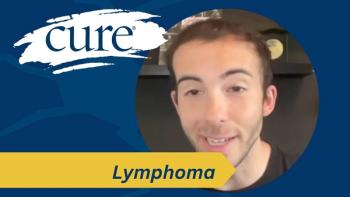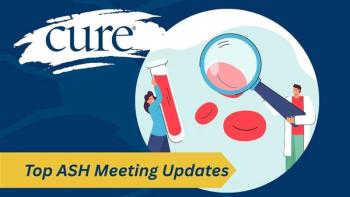
Mortality Risk Later in Life May Be Increased in Childhood Leukemia Survivors With Down Syndrome
Patients with Down syndrome have an increased risk for leukemia during childhood, and toxicities related to treatment may be more common in this patient population.
Patients with Down syndrome who were childhood leukemia survivors had a significantly increased risk for late mortality than those without Down syndrome who survived childhood leukemia, according to recent study results.
Findings from the study, which were published in Cancer, also demonstrated that childhood leukemia survivors with Down syndrome also had a higher mortality risk than patients with Down syndrome who never developed leukemia.
“Our findings prove that late effect risk is different in this population, and that traditional causes of late mortality, such as cardiovascular disease or second cancers, don’t seem to be the cause,” said lead study author Dr. Sumit Gupta, a staff oncologist in the Division of Hematology/Oncology at the Hospital for Sick Children in Toronto, Canada, and associate professor at University of Toronto, in an interview with CURE®.
It has been known that patients with Down syndrome have an increased risk for developing leukemia compared with those without Down syndrome, especially during childhood. This increased risk is specific to
“This is a subject of extensive research for the past so many years,” Dr. Ana Xavier, an associate professor in the Department of Pediatrics at The University of Alabama at Birmingham Heersink School of Medicine, told CURE®. “(Acute myeloid leukemia and acute lymphocytic leukemia) are very different in terms of mechanisms of disease. The source of the problem is most likely related to the extra copy of chromosome 21. Chromosome 21 is the home for several genes that have been associated with hematopoiesis regulation and even leukemogenesis, so the extra chromosome copy causes some sort of genetic imbalances that may lead to the development of leukemia.”
Gupta and his colleagues wanted to look further into late effects of therapy in children with Down syndrome, which typically accounts for outcomes that occur at least three months after treatment completion.
“Though we know a lot about the late effects of leukemia therapy on children without (Down syndrome), little is known about whether these risks are different for children with (Down syndrome), who have a different risk of health problems in general,” he explained.
Xavier, who was not associated with this study, added that patients with Down syndrome and leukemia are often treated similar to those without Down syndrome.
“The mortality associated to leukemia and its treatment, per se, has historically beenhigher, suggesting that they do have a different way of handling chemotherapy and side effects,” she said. “Over the past several years, those protocols to treat those patients have been adjusted to fit those patients better. Because individuals with Down syndrome are born immunodeficient, they do carry a higher risk of infection while on chemotherapy, etc. But what's interesting, though, is that we didn’t have data or we still don't have enough data that we can understand how those patients do long term.”
To do so, researchers analyzed data from patients who were diagnosed with leukemia when they were younger than 18 years old between 1987 and 2013 and survived five or more years after their last pediatric cancer event. This included pediatric leukemia survivors with Down syndrome (79 patients) and survivors without Down syndrome (231 patients). The study also included 790 patients with Down syndrome who did not develop childhood leukemia.
Pediatric leukemia survivors with Down syndrome had lower rates of 20-year overall survival (the time that a patient with cancer is still alive) compared with survivors without Down syndrome (81.7% versus 98.3%). This was also seen in patients with Down syndrome without leukemia (96.3%). Death from infection or lung complications occurred in pediatric leukemia survivors with Down syndrome.
“There is a hint that pulmonary or infectious causes might be responsible (for the increased risk for late mortality), which is a different pattern than seen in survivors without (Down syndrome), but further study is needed to confirm this,” Gupta said.
Xavier added some thoughts about these mortality findings.
“I think the most striking results of this study is the risk of death,” she said. “I was very surprised by that. The paper couldn't tell or pinpoint exactly the reasons for that, (but it is) probably related to the methods those cohorts of patients, which is very common in studies designed like this, are based on datasets, so they are all based and very limited in the information we can get, which is fine too.”
She mentioned that having to face her patients in similar situations may be bothersome for her and her patients moving forward.
“Knowing that if I have here a patient like that who is starting to be treated today with ALL — and to tell his or her family that this kid potentially has 10- (to) 12-fold increased risk of dying in comparison to non-Down syndrome survivors being treated for the same diseases are very concerning to me.”
The incidence of congestive heart failure did not differ between survivors with Down syndrome, survivors without Down syndrome or patients with Down syndrome who did not develop leukemia. No differences were observed regarding dementia or hearing loss in patients with Down syndrome regardless of their leukemia status.
Although this study does provide some insight into
“I have some experience with survivorship in pediatric cancer, and we have a significant number of Down syndrome patients that we care for,” Xavier said. “Every time I see those patients come into clinic to discuss long-term side effects, I have to tell the family that everything I'm talking about, it has been studied in a non-Down Syndrome population, so to translate to a kid who has a different set of problems is difficult.”
For more news on cancer updates, research and education, don’t forget to





